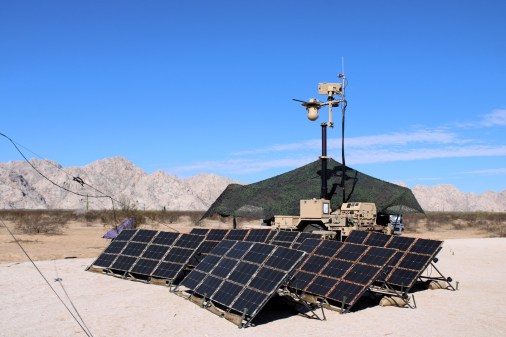Army electronic warfare tool found to be effective by Pentagon weapons tester

The Pentagon’s chief weapons tester has positively assessed a key Army electronic warfare tool, declaring that it’s operationally effective.
The program in question, the Electronic Warfare Planning and Management Tool (EWPMT), is described by officials as the glue holding all EW capabilities on the battlefield together, serving as a command-and-control planning capability that allows forces to visualize the potential effects of these types of weapons and chart courses of action to prevent their forces and systems from being jammed during operations.
Despite past issues, the program is effective, according to the fiscal 2022 annual report from the Office of the Director, Operational Test and Evaluation, which was recently released.
“DOT&E assessed EWPMT as operationally effective at supporting electromagnetic spectrum planning and management operations, demonstrating the capability to support the commander’s Military Decision-Making Process subject to performance issues detailed in the classified Initial Operational Test and Evaluation (IOT&E) report published in May 2022,” the report stated.
The program was included in the classified portion of the report last year and therefore, no public data was available. In response to ire from lawmakers, the DOT&E office only released one report as opposed to an additional classified one.
“EWPMT is operationally suitable, demonstrating high operational availability. The Army intends to assess the remote management of electronic warfare assets in [follow-on operational test and evaluation] events scheduled in FY25,” the report said.
The Army, for its part, noted it has remedied previous issues that have been identified by the Pentagon’s chief weapons tester.
“The majority of the initial findings from DOT&E have been addressed. We will continue to improve EWPMT, enhancing Soldier training and system survivability, adding new operational capability, and improving the open architecture and standards necessary to maintain alignment with the Army’s plan for future data management,” a spokesperson for Program Executive Office Intelligence, Electronic Warfare and Sensors, said in a statement to DefenseScoop. “EWPMT Inc 1 provides a first-of-its-kind operational capability to maneuver forces to dominate the Electromagnetic Spectrum.”
The spokesperson added that the Army is satisfied with the results of initial operational test and evaluation that occurred in August 2021 and is proceeding with a planned full deployment of Increment 1 in fiscal 2024.
The first increment, which recently wrapped up, included four capability drops that are incremental software deliveries that each build upon the previous one.
But now, the Army is getting away from the term “increment” as it moves forward with a new acquisition strategy for the next phase of the program.
According to DOT&E, the Army’s initial operational test and evaluation for the Electronic Warfare Planning and Management Tool — conducted with 2nd Stryker Brigade Combat Team, 4th Infantry Division in conjunction with a command post exercise in August 2021 at Fort Carson, Colorado — was adequate to support an assessment of operational effectiveness, suitability and survivability.
It included an adversarial assessment as well, but the report noted that the system’s survivability in a cyber contested environment is included in the classified annex of the IOT&E report.
“A unit equipped with EWPMT INC1 is effective in conducting EW and electromagnetic spectrum planning and management,” DOT&E found. Further, it is operationally suitable, demonstrating high operational availability.
“Soldiers were able to remedy software faults quickly. Soldiers indicated the system is easy to learn and use. Training was sufficient, but soldiers provided suggestions to increase its effectiveness,” the report said.
The report did note that follow-on operational test and evaluation is delayed for two years due to a slip in the Multi-Function Electronic Warfare-Air Large and Terrestrial Layer System programs.
MFEW is an aerial jamming pod and TLS is the first brigade organic integrated cyber, signals intelligence and electronic warfare system that will be mounted on Stryker vehicles. Both systems are made by Lockheed Martin.
DOT&E issued four recommendations for the Army, which include: verify correction of system performance, suitability, and survivability deficiencies identified in IOT&E prior to follow-on operational test and evaluation; complete a cyber assessment from an outsider threat posture; refine training to stress troubleshooting and help staff understand the systems’ capabilities; and continue coordination with MFEW-AL and TLS to demonstrate control and management of the systems during EWPMT follow-on operational test and evaluation.






